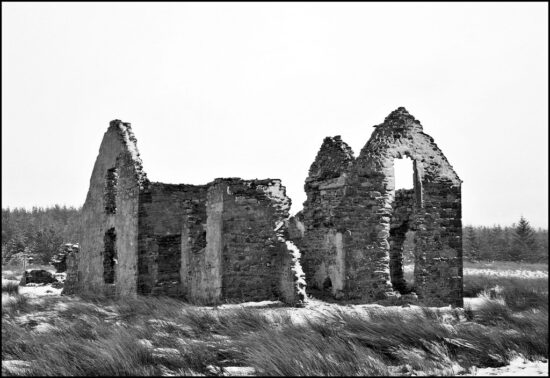Plot and Storyline
“Bleak House” is a novel written by Charles Dickens and published in 1852-1853. The story is set in London during the early 19th century and follows the lives of several characters whose fates are intertwined through a complex web of legal disputes and personal relationships.
At the center of the story is the never-ending Chancery lawsuit of Jarndyce and Jarndyce, which has been dragging on for generations, consuming the inheritances of countless families. The legal case serves as a metaphor for the decay and corruption of the British legal system, highlighting its inefficiency and the toll it takes on the lives of those involved.
The main protagonist, Esther Summerson, is a young orphan who is taken in by her guardian, John Jarndyce. Esther is kind-hearted, virtuous, and selfless, and she becomes involved in the legal proceedings of Jarndyce and Jarndyce. She narrates a significant portion of the story, providing insight into the lives and experiences of the other characters.
As the plot unfolds, various subplots and storylines emerge, including the romantic entanglements of Esther and her love interests, the mysterious past of Lady Dedlock, and the lives of other characters connected to the lawsuit. These subplots add depth and complexity to the narrative, weaving together themes of love, ambition, social class, and the search for identity.
Throughout the novel, Dickens employs a multi-perspective narrative structure, shifting between different characters and storylines. This allows the reader to gain a comprehensive view of the events and the diverse experiences of the characters. The story is filled with suspense, unexpected twists, and revelations, keeping the reader engaged and eager to discover the ultimate resolution of the various conflicts.
Characters
“Bleak House” features a rich cast of characters, each with their own distinct personalities, motivations, and roles within the story. Some of the key characters include:
– Esther Summerson: The main protagonist and narrator of the story. Esther is kind-hearted, resilient, and determined to uncover the mysteries surrounding her past. She acts as a moral compass in the novel and embodies virtues such as compassion and forgiveness.
– John Jarndyce: Esther’s guardian and a central figure in the story. Jarndyce is a benevolent and generous man who detests the Chancery lawsuit and its destructive impact. He provides support and guidance to Esther and other characters throughout the novel.
– Lady Dedlock: A mysterious and enigmatic character, Lady Dedlock is married to Sir Leicester Dedlock. She harbors a dark secret from her past, which becomes a pivotal element of the plot. Lady Dedlock represents the constraints imposed by social class and the consequences of suppressing personal desires.
– Mr. Tulkinghorn: A cunning and manipulative lawyer involved in the Jarndyce and Jarndyce case. He is determined to protect the secret of Lady Dedlock’s past and plays a significant role in the unfolding events of the novel.
– Richard Carstone and Ada Clare: Two young cousins who are potential beneficiaries of the Jarndyce and Jarndyce lawsuit. They become entangled in the legal proceedings and their lives are consumed by the hope of winning the case. Their journey illustrates the destructive nature of obsession and the dangers of placing one’s hopes solely on external circumstances.
These characters, along with many others, undergo personal growth and transformation throughout the novel. They are often faced with moral dilemmas, societal pressures, and personal conflicts, which shape their actions and contribute to the overall themes of the story.
Themes and Symbols
“Bleak House” explores several major themes and makes use of symbols to convey its message. Some of the prominent themes include:
– The Decay of the Legal System: The novel serves as a scathing critique of the Chancery Court and the British legal system of the time. The never-ending lawsuit of Jarndyce and Jarndyce highlights the inefficiency, corruption, and moral bankruptcy of the legal processes. It exposes the detrimental effects of a system that prioritizes technicalities and personal gain over justice and the well-being of individuals.
– Social Class and Inequality: Dickens examines the stark divisions between social classes in Victorian society. He portrays the stark contrast between the privileged upper class and the impoverished lower class, highlighting the injustices and inequalities that arise from such disparities. The characters’ experiences and interactions shed light on the consequences of social stratification and the limited opportunities for upward mobility.
– The Search for Identity: Many characters in the novel struggle with questions of identity and self-discovery. Esther Summerson, in particular, seeks to uncover her true parentage and find her place in the world. The theme of identity is also explored through the character of Jo, a young street sweeper, who represents the marginalized and forgotten members of society.
– Love and Sacrifice: Love, in its various forms, is aprominent theme in “Bleak House.” The novel explores both romantic and familial love, highlighting the sacrifices individuals are willing to make for the ones they care about. Esther’s selfless nature and her unconditional love for others, despite her own personal struggles, serve as an example of the transformative power of love.
Symbols are used throughout the novel to enhance its themes and meaning. The “Bleak House” itself represents decay, stagnation, and the consequences of unresolved conflicts. The fog that shrouds London serves as a metaphor for the moral ambiguity and confusion that permeate society. Additionally, the symbol of the “Deadlock” reflects the entrapment and stagnation experienced by characters who are bound by societal expectations and constraints.
Writing Style
Charles Dickens is known for his rich and vivid writing style, and “Bleak House” is no exception. His language is descriptive, evocative, and infused with a strong sense of social commentary. Dickens often employs satire to expose the flaws and hypocrisies of Victorian society, using humor and irony to make his points.
The author’s use of literary techniques adds depth and complexityto the narrative. He employs foreshadowing and suspense to create anticipation and engage the reader. The multiple perspectives and shifting narrative voice allow for a comprehensive exploration of the characters and their experiences. Dickens also utilizes symbolism and imagery to convey abstract ideas and emotions, bringing the story to life in the reader’s imagination.
One example of Dickens’ writing style can be seen in his description of the fog that envelops London:
“Fog everywhere. Fog up the river, where it flows among green aits and meadows; fog down the river, where it rolls defiled among the tiers of shipping and the waterside pollutions of a great (and dirty) city. Fog on the Essex marshes, fog on the Kentish heights. Fog creeping into the cabooses of collier-brigs; fog lying out on the yards and hovering in the rigging of great ships; fog drooping on the gunwales of barges and small boats. Fog in the eyes and throats of ancient Greenwich pensioners, wheezing by the firesides of their wards; fog in the stem and bowl of the afternoon pipe of the wrathful skipper, down in his close cabin; fog cruelly pinching the toes and fingers of his shivering little ‘prentice boy on deck. Chance people on the bridges peeping over the parapets into a nether sky of fog, with fog all round them, as if they were up in a balloon and hanging in the misty clouds.”
This passage demonstrates Dickens’ ability to create a vivid and atmospheric setting. His use of repetitive phrases and imagery immerses the reader in the foggy atmosphere, evoking a sense of mystery and uncertainty.
Setting and Atmosphere
The setting of “Bleak House” plays a significant role in establishing the tone and atmosphere of the novel. The story is primarily set in London during the mid-19th century, a period characterized by rapid industrialization, urbanization, and social inequality.
The title itself, “Bleak House,” suggests a desolate and gloomy environment, reflecting the decay and stagnation that pervade the novel. The physical surroundings, such as the foggy streets of London and the dilapidated buildings, contribute to a sense of hopelessness and confinement.
The atmosphere of the novel is often somber and melancholic, mirroring the pervasive social and moral decay depicted by Dickens. The characters’ experiences are colored by the oppressive nature of their surroundings, emphasizing the limitations and hardships imposed by their social class, gender, and the prevailing legal system.
Additionally, the stark contrast between the various settings in the novel serves to underscore the stark divisions in Victorian society. The opulent mansions of the wealthy elite stand in stark contrast to the squalid and impoverished neighborhoods inhabited by the lower classes. This juxtaposition highlights the stark inequalities and social injustices prevalent during the time.
Historical, Social, or Political Context
“Bleak House” was written and set in the mid-19th century, a time of significant social and political change in England. The novel reflects the concerns and critiques of Charles Dickens regarding the issues prevalent in Victorian society.
One of the major social issues depicted in the novel is the stark divide between social classes. Dickens highlights the vast disparities in wealth, education, and opportunities between the upper and lower classes. The portrayal of impoverished characters, such as Jo and the inhabitants of the slums, exposes the harsh living conditions and limited prospects faced by the working class. Through this depiction, Dickens critiques the social inequalities and advocates for greater empathy and reform.
The novel also delves into the corrupt and inefficient legal system of the time. The Chancery lawsuit of Jarndyce and Jarndyce serves as a metaphor for the decay and moral bankruptcy of the British legal system. Dickens criticizes the excessive bureaucracy, delays, and expenses involved in legal proceedings, which often resulted in the perpetuation of injustice and the destruction of families. His portrayal of the legal system reflects the need for reform and the detrimental effects of a system that prioritizes technicalities over justice.
Furthermore, “Bleak House” addresses the position of women in Victorian society. The character of Esther Summerson challenges traditional gender roles by exhibiting strength, resilience, and intelligence. Her narrative voice provides insight into the experiences of women and highlights the limitations imposed on them by societal expectations. Dickens critiques the subjugation of women and advocates for their empowerment and agency.
Overall, “Bleak House” captures the social, political, and moral complexities of Victorian England. By addressing issues such as social class, the legal system, and gender roles, Dickens offers a critique of the societal structures and calls for compassion, reform, and social justice.
Impact and Reception
“Bleak House” has had a lasting impact on literature and continues to be recognized as one of Charles Dickens’ most significant works. The novel received critical acclaim upon its publication and has since become a classic of English literature.
The novel’s intricate plot, rich character development, and social commentary have contributed to its enduring popularity. “Bleak House” is praised for its vivid depiction of Victorian society and its ability to engage readers through its compelling narrative. The multi-perspective storytelling, with Esther Summerson as the primary narrator, offers a unique and immersive reading experience.
The novel’s reception among readers and critics has been overwhelmingly positive. It has been celebrated for its themes of social injustice, the critique of the legal system, and its portrayal of complex characters. Dickens’ masterful storytelling and his ability to evoke empathy for the plight of the marginalized have resonated with audiences throughout the years.
“Bleak House” has also received recognition for its cultural significance. It contributed to public awareness of the social issues of the time, such as the plight of the poor and the need for legal reform. The novel’s influence can be seen in subsequent works of literature, as well as in the broader cultural sphere. Its themes and characters have been referenced and adapted in various forms of media, including stage adaptations, films, and television series.
In terms of awards and recognition, “Bleak House” did not receive any specific accolades during Dickens’ lifetime, as formal literary awards were not as prevalent as they are today. However, the novel’s enduring reputation and its inclusion in lists of the greatest English novels of all time attest to its enduring impact.
Final Conclusions
“Bleak House” is a masterpiece of Victorian literature that continues to captivate readers with its intricate plot, vivid characters, and social commentary. Charles Dickens’ exploration of social inequality, the corrupt legal system, and the position of women in society remains relevant and thought-provoking.
The novel’s historical, social, and political context provides a backdrop for the exploration of these themes. Dickens critiques the social disparities and injustices of Victorian society, shedding light on the struggles faced by the working class and marginalized individuals. He also exposes the inefficiencies and moral bankruptcy of the legal system, calling for reform and justice.
“Bleak House” has had a lasting impact on literature and popular culture. Its influence can be seen in subsequent works that address social issues and critique societal structures. The novel’s critical acclaim, cultural significance, and enduring popularity are a testament to its enduring relevance and its place as one of Charles Dickens’ most notable achievements.
Sources:






